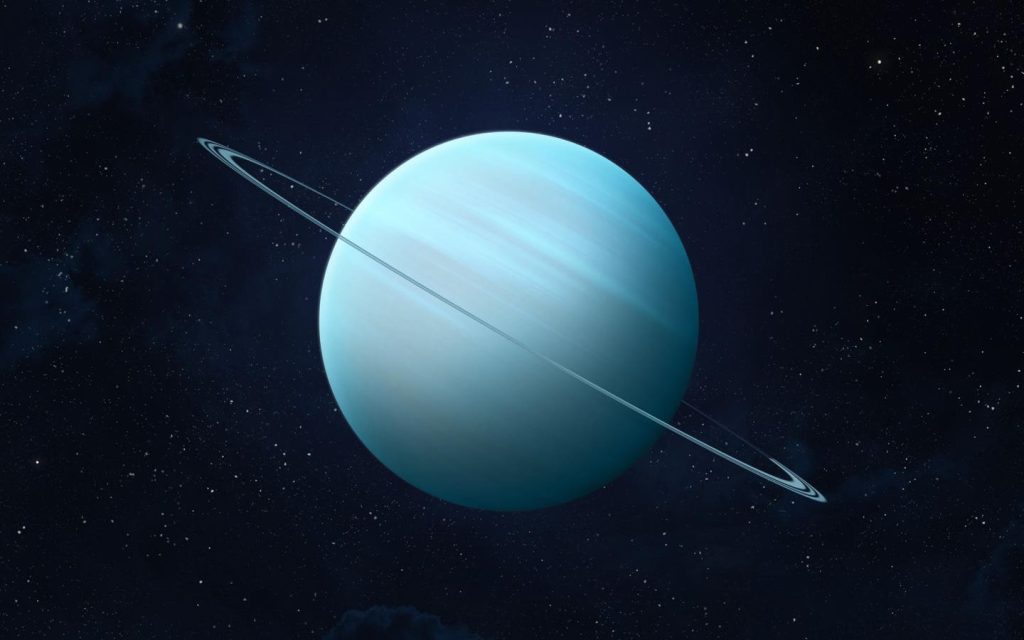This weekend presents a rare opportunity to spot the planet Uranus in the night sky, even without a high-powered telescope. Thanks to Jupiter acting as a celestial signpost, both planets will be visible next to each other in the post-sunset western night sky. This alignment occurs as Uranus orbits the sun and will provide a unique chance for stargazers to witness the blue-green planet in close proximity to the giant planet Jupiter. Both planets will be located in the constellation of Aries, making them easier to locate for those interested in observing the night sky.
For individuals who have never seen Uranus before, this weekend will provide an excellent opportunity to do so. With both Jupiter and Uranus visible together in the night sky, stargazers can use a pair of binoculars or a small telescope to spot the distant planet. While Jupiter will be more easily visible due to its brightness, Uranus may require some searching as it is significantly dimmer. However, with a little effort, observers should be able to locate Uranus by first finding Jupiter and then looking to the right.
In addition to the chance to see Uranus, stargazers will also have the opportunity to observe Comet Pons-Brooks shining at its brightest in the night sky. This celestial event adds an extra element of excitement to the weekend’s stargazing activities and provides additional incentive for individuals to venture outside and look up at the sky. With both Jupiter and Uranus visible and Comet Pons-Brooks shining brightly, this weekend promises to be an unforgettable experience for those interested in astronomy.
To catch a glimpse of Jupiter and Uranus together in the night sky, stargazers should plan to look an hour after sunset on Saturday, April 20 through Sunday, April 23. During this time, both planets will be visible in the western sky for about an hour before eventually sinking below the horizon. The close proximity of Jupiter and Uranus will allow observers to see both planets in the same field of view through a pair of binoculars or a small telescope, making it easier to spot both celestial bodies in the night sky.
While it is technically possible to see Uranus with the naked eye, it may be challenging for most individuals due to its low visual magnitude. With a magnitude of 5.8, Uranus is on the cusp of being visible to the naked eye and may require very dark skies and a keen eye to spot. However, in a telescope, Uranus displays a distinct blue-green color, adding to the excitement of observing this distant planet in the night sky. For those fortunate enough to catch a glimpse of Uranus, it is a reminder of the vast distances and complexities of the solar system.
Overall, this weekend’s celestial event offers stargazers a unique opportunity to see Uranus and Jupiter together in the night sky, along with the added bonus of Comet Pons-Brooks shining brightly. By taking advantage of this alignment of planets and comet, individuals interested in astronomy can enjoy a memorable stargazing experience and marvel at the wonders of the universe. With clear skies and wide eyes, stargazers are encouraged to venture outside and witness this rare event in the night sky.















